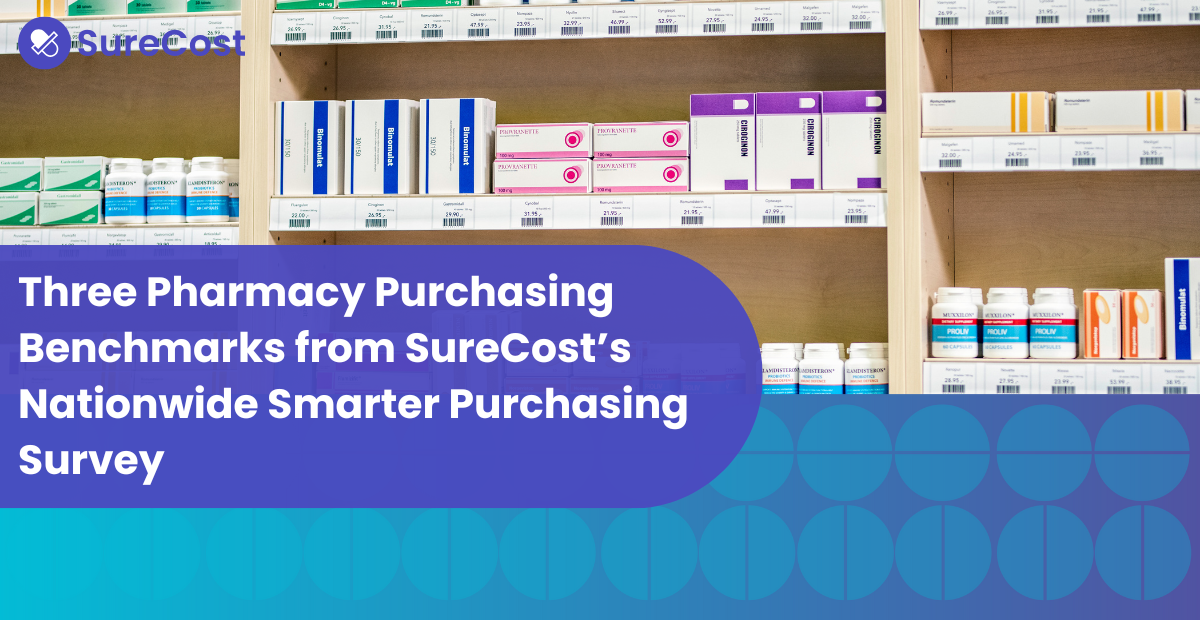Remember extra credit? If you wanted to boost your grade, maybe the teacher would let you do one more assignment. Or if you did an especially good job, they might give you a few additional points. We might have moved beyond chasing grades, but when it comes to pharmacy purchasing compliance, the difference between “Satisfactory” and “Excellent” means savings, efficiency and peace of mind.
Compliance should be about more than just meeting the requirements in your primary vendor agreement. Successful pharmacies analyze their contracts against their purchasing history. They make data-driven purchasing decisions to optimize how much they spend and whom they buy from. Compliance stops being an obligation and becomes an opportunity to save more and streamline their work.
In this blog post, we’ll show you the difference between compliance that satisfies the bare minimum versus maximizing compliance.
Take Advantage of Technology
Minimum purchase volume, total spend, source compliance ratio, inclusions/exclusions: that’s not even all of the requirements and calculations that are part of the standard primary vendor agreement. Reviewing each purchase order against the source agreement is a time-consuming, tedious approach.
It’s no wonder many pharmacies only consider compliance sporadically or as time permits. They simply lack the time and staff to keep up with it, let alone figure out how to use it to their advantage. They also lack the right tools. Manual processes often mean manual errors, meaning missing compliance targets, losing incentives and paying fines.
Instead of manually tracking primary vendor compliance and comparing purchases from multiple sources, pharmacies can capture all the information and ensure compliance with a unified purchasing solution.
With the right technology, you can load the terms of your agreement(s) and automate compliance. Instead of manually confirming information and crunching the numbers, the system can instantly report on:
- Contract agreement
- Compliance metrics
- Reimbursement tiers
- Recommendations to meet rebate tiers
- Discrepancies in purchasing, pricing, etc.
You avoid financial losses and penalties by assuring you’re maintaining compliance. But it goes beyond meeting compliance ratios. You gain insight into leveraging contact terms to optimize your purchases (for example, adjusting spend on a particular item to reach new rebate tiers).
Shop Smarter (Not Harder)
Some pharmacies have the time or staff to search all the items in their primary vendor catalog, including multiple listings across different categories. They may also be comparing secondaries and GPO pricing. Poring over thousands of items and spot-checking each one against the other is another imperfect manual process that just leads to wasted hours and exhausted teams.
Chasing the lowest price doesn’t even give you the best purchasing option. In fact, “cheapest” does not mean “best.” Purchasing items without accounting for the impact on compliance can be costly. Pharmacies may find a lower price from secondaries but pay penalties when they don’t meet compliance with their primary. As the table below demonstrates, without accounting for the item’s actual cost, a pharmacy could end up paying more buying based on the lowest “sticker price”:
|
Primary Vendor |
Secondary Vendor |
|
Catalog price: $1,800 |
Catalog price: $2,000 |
|
Cost of Goods Sold (COGS): $1,800 |
COGS: $1,500 |
Instead of hunting the lowest price ‘til you or your staff drop, find a solution that gives your pharmacy true market visibility. A purchasing management solution consolidates all source data. It combines all your catalogs into a single interface and automatically compares all your options based on various factors such as price, actual COGS and compliance ratio. The system highlights the best purchasing options while ensuring you still meet your compliance targets. Plus, an integrated purchasing solution empowers your pharmacy to take advantage of competitive pricing from throughout the market.
Don’t Stick With What You Know
Unfortunately, if you think buying from just a primary simplifies things, you might be putting your pharmacy at a disadvantage. Making all purchases from a single source may seem like it ensures compliance. Yet a wholesaler catalog won’t disclose your best purchasing option. That’s not the wholesaler’s fault; product listings are complex, and every pharmacy’s needs and goals differ. A single product could be listed across multiple categories. Depending on which item they select, the pharmacy could lose out on rebates and pay more in the long term. Only purchasing from their primary and buying the same items as competitors also means missing out on competitive pricing.
Purchasing data collected from over 5,000 pharmacy professionals across the country showed that 73% of their reported savings came from purchases made outside the top 200 most commonly prescribed medications. These pharmacies also reduced their COGS by an average of approximately 11% through purchasing outside that top 200. At that rate, a pharmacy with an annual purchasing volume of $3M saves roughly $327K annually. These pharmacies also have more options when a drug shortage hits or their primary can’t fill an order on time.
Shopping secondary vendors and taking advantage of GPO/buying group pricing unlocks more options, better deals, opportunities to negotiate and other benefits from an expanded vendor portfolio. The right purchasing management solution will highlight better options while ensuring you still meet compliance targets with your primary vendor. You can leverage the entire market with the flexibility to shop based on your needs without compromising compliance.
Optimal Compliance is Essential
Pharmacies need every advantage to stay competitive. Pharmacy purchasing was never easy. However, drug shortages and staff shortages are on the rise. DSCSA regulations are getting even more complex. More than ever, greater transparency into contracts and efficiently harnessing the entire market are crucial to your pharmacy’s success and capacity to provide high-quality patient care. When it comes to compliance, extra credit is mandatory.




.png)



